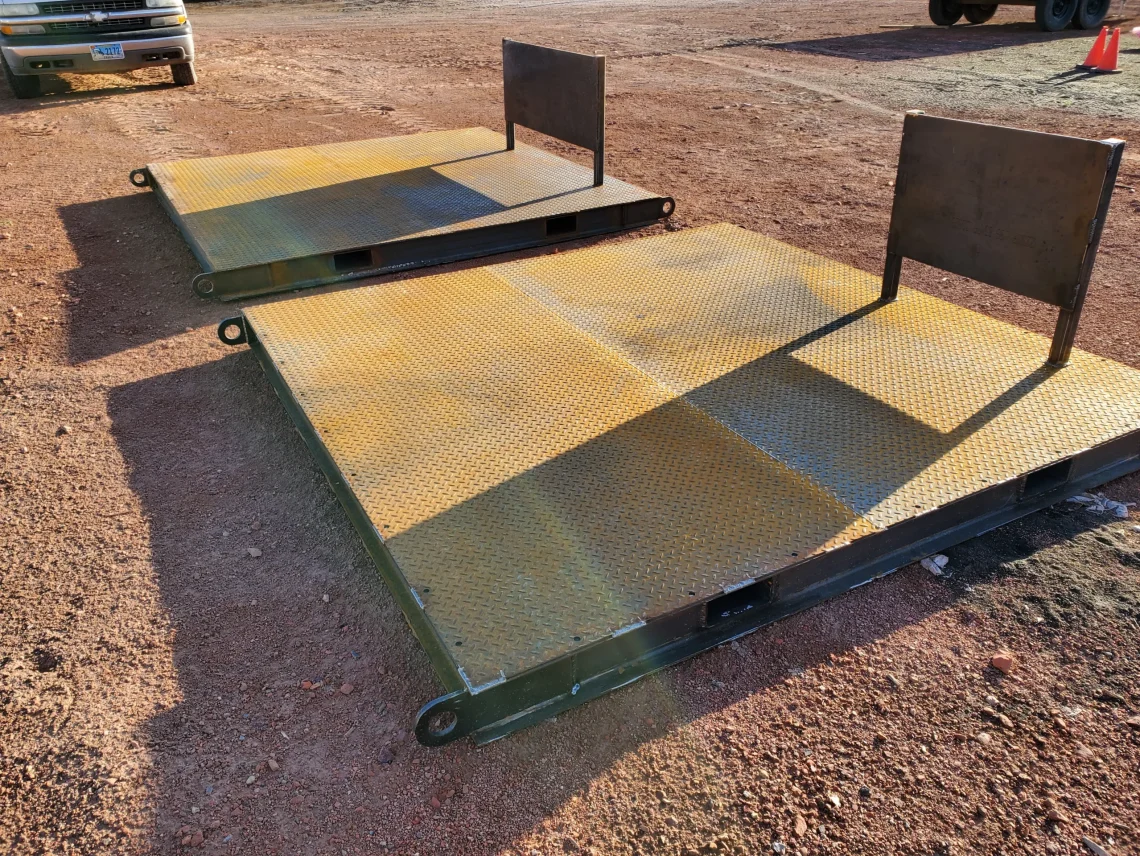
Table of Contents
ToggleA pallet has both top and bottom decks, offering better stability, stack ability, and compatibility with forklifts ideal for shipping, warehousing, and automation. A skid is simpler with just a top deck, making it lighter, cheaper, and better for temporary setups or heavy machinery. Choose pallets for standard logistics and skids for custom, heavy-duty, or short-term use.
In logistics and material handling, choosing between a pallet and a skid sometimes together referred to as a pallet skid can impact efficiency, cost, stability, and compatibility. In this guide, we’ll unpack the differences clearly and help you make the best decision for your operations.
A pallet is a flat platform usually with both top and bottom decks used to support goods during storage and transport. Its standardized dimensions (like the common 48×40‑inch size) allow seamless use with equipment like forklifts and pallet jacks.
A skid resembles the original pallet design, featuring just a top deck supported by runners or stringers without a bottom deck. This simpler, more lightweight structure makes skids ideal for temporary, custom, or heavy machinery use. Learn more about skid types and applications in Red River’s insights on types of skids and how they serve material handling in Unlocking the Purpose and Versatility of Skids in Material Handling.
| Feature | Skid | Pallet |
|---|---|---|
| Bottom Deck | No | Yes |
| Entry Points | 2‑way entry via runners | 4‑way entry for forklifts and pallet jacks |
| Standardization | Variable sizes | Standardized (e.g., 48×40″) |
| Stackability | Limited | Excellent |
| Typical Use | Temporary or machinery base | Shipping, warehousing, long-term storage |
| Cost | Lower simpler design | Higher due to materials and complexity |
| Weight Capacity | Moderate | High |
| Versatility | Limited; custom capable | High automated systems, racking, conveyors |
Materials: Pallets and skids are typically made from wood, plastic, or metal wood being most common due to its balance of cost and strength.
Standards & Regulations: Pallets used in international shipping often follow ISPM 15 regulations to prevent pest infestation. Discover the varied industry uses for skids in the world of construction skids.
Use Cases:
For a deeper understanding of pallet and skid structures and functions, you can refer to authoritative sources such as:
Pallets offer standardized, stackable, and highly versatile logistics solutions even if they come at a higher cost.
Skids, conversely, are simpler, cost-effective, and customizable perfect for heavy equipment, temporary setups, or special-sized loads.
Consider your unique needs load type, equipment, storage, and handling complexity. Connect with Red River to help design or source the right pallet skid solution for your project.
A pallet includes a bottom deck for stability and stackability, while a skid has just a top deck—making it lighter but less stable in stacking.
You can for short distances or custom scenarios, but pallets are usually better for secure stacking, standardized transport, and long-term storage.
Pallets require more materials, have more precise standardization, and offer greater structural strength and equipment compatibility.
Yes especially for international use. Pallets must meet ISPM 15 standards (wood treatment for pest control), among other regional regulations.
Yes! Pallets and skids can be tailored in size, material, and design, but skids generally allow easier customization for unique or heavy-duty purposes.
A skid is often better suited because of its simple, sturdy nature and ease of customization for heavy or awkward loads.
Absolutely. Pallets’ standardized shape and four-way entry make them ideal for conveyor systems, racks, and robotic handlers.
In the realm of industrial solutions, Red River emerges as a pioneer, offering a diverse range of custom-engineered products and facilities. Among our specialties is the design and production of Custom/OEM Pressure Vessels, meticulously crafted to meet individual client requirements, ensuring performance under various pressure conditions. Our expertise extends to the domain of prefabrication, where Red River leads with distinction.
The company excels in creating prefabricated facilities, modules, and packages, reinforcing its stance as a forerunner in innovation and quality. This proficiency is further mirrored in their Modular Skids offering, where they provide an array of Modular Fabricated Skid Packages and Packaged equipment. Each piece is tailored to client specifications, underlining their commitment to delivering precision and excellence in every project they undertake.